© previous project next project¨
205 sq.m.
2,207 sq.ft.
The renovation of the interior of the one floor in the old building that was utilized without maintenance between 40 years.
The renovation budget per area was 1/5 of the usual case. In this case, we chose to utilize the old finish materials by repainting,
the control of the color, or partial pulling-down.
Indicating a respect for the accumulation of the time, we intended to realize the interior with nostalgia in newness.
Through the space, the brown elements are added and are scattered.
Those are apparatus as a sign for introducing visitor
from the entrnace to the fond of the shop.
The brown elements have divers functions such as handrail, eyestop board, gate, shelf, or partition.
Those are disposed so
that they would generate a flow in the space
and for the visitors.
Location : Fukazawa, Setagaya, Tokyo, Japan
Architect : Daigo Ishii + Future-scape Architects
Construction : Ueki-gumi Construction Company

@@
@@
@
@
@
@
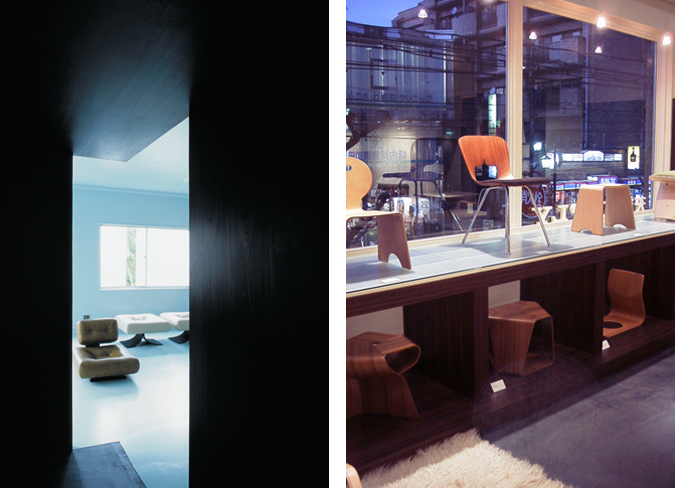 (Left) See the tunnel-shaped gate that enters the gallery from the corridor and the exhibition space beyond it. (Right) See the shelves by the window of the shop and the masterpiece furnitures of Tendo Mokko.
(Left) See the tunnel-shaped gate that enters the gallery from the corridor and the exhibition space beyond it. (Right) See the shelves by the window of the shop and the masterpiece furnitures of Tendo Mokko.
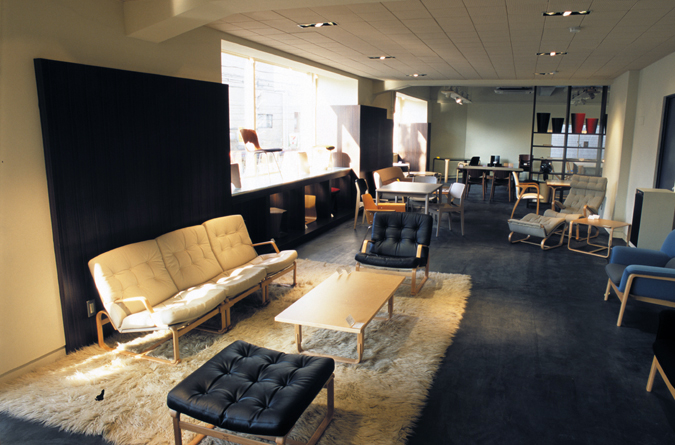 The shop has been renovated while retaining the atmosphere of the building 40 years ago. Instead of making a big change to the whole, the skeleton was left, meanwhile the color tone is arranged, brown elements are scattered, and other spaces was connected with the shop.
The shop has been renovated while retaining the atmosphere of the building 40 years ago. Instead of making a big change to the whole, the skeleton was left, meanwhile the color tone is arranged, brown elements are scattered, and other spaces was connected with the shop.
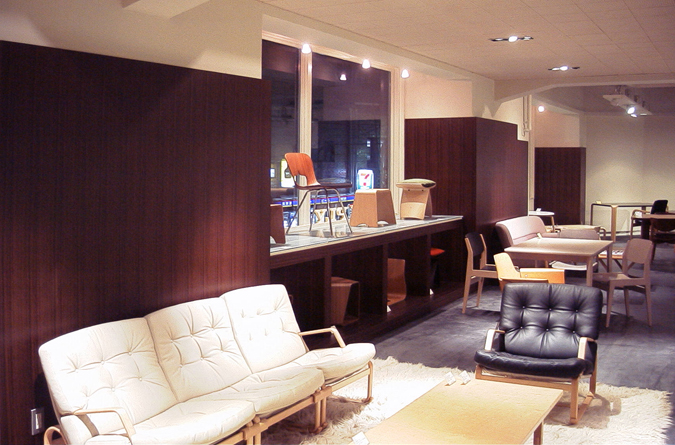 See the evening scenery of the shop. The shelves and walls finished with Andean rose become brown elements and invite people to the back.
See the evening scenery of the shop. The shelves and walls finished with Andean rose become brown elements and invite people to the back.
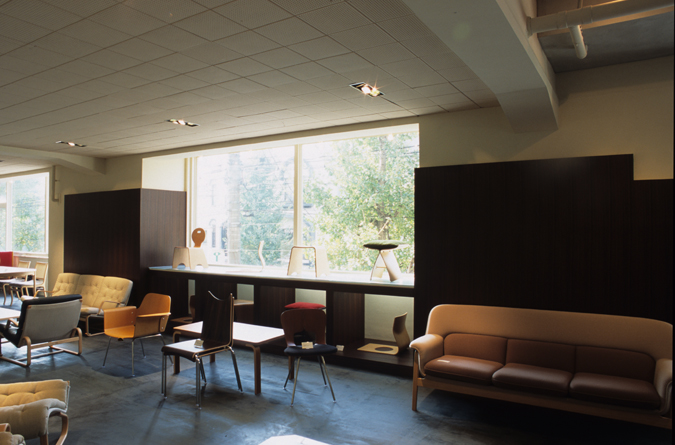 See the shelves by the window of the shop. The brown elements are an Andean rose, and the floor is finished with black mortar.
See the shelves by the window of the shop. The brown elements are an Andean rose, and the floor is finished with black mortar.
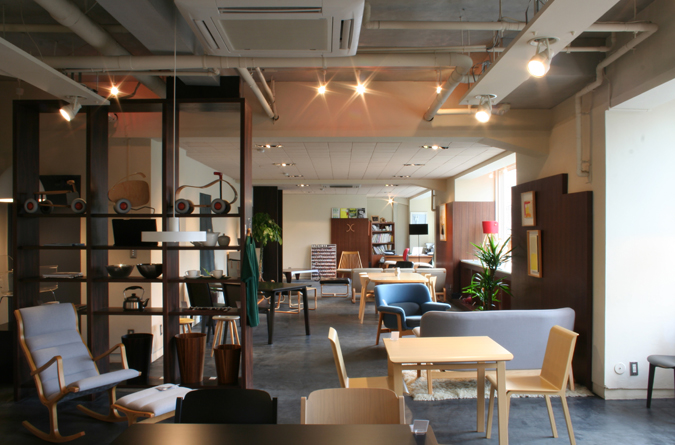 Look back at the shop from the back. Part of the shop ceiling has been removed to reveal the concrete ceiling.
Look back at the shop from the back. Part of the shop ceiling has been removed to reveal the concrete ceiling.
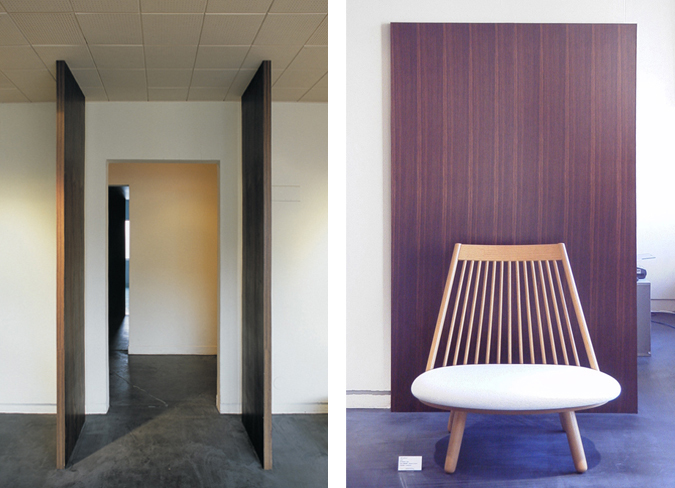 (Left) Look at the entrance of the shop from the corridor. Brown elements emphasize the entrance as the changing point. (Right) A furniture is exhibited against the brown board wall of the shop.
(Left) Look at the entrance of the shop from the corridor. Brown elements emphasize the entrance as the changing point. (Right) A furniture is exhibited against the brown board wall of the shop.
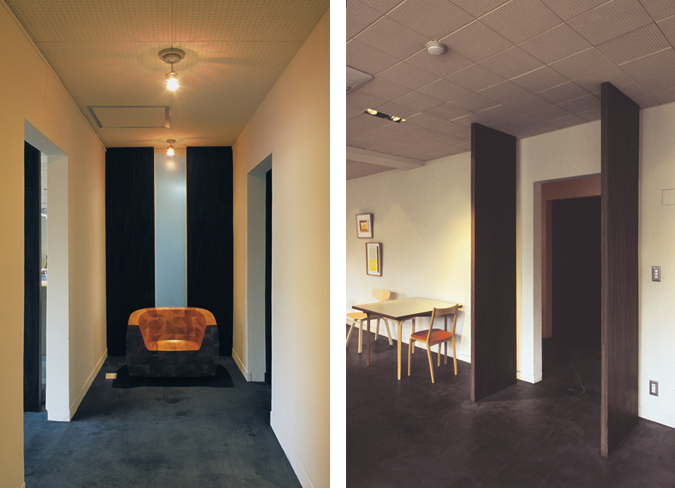 (Left) Look at the corridor. An Andean rose wall as a brown element is placed at the eye-stop at the end of the corridor, and implies that the direction of people's flow will change. (Right) Shop entrance.
(Left) Look at the corridor. An Andean rose wall as a brown element is placed at the eye-stop at the end of the corridor, and implies that the direction of people's flow will change. (Right) Shop entrance.
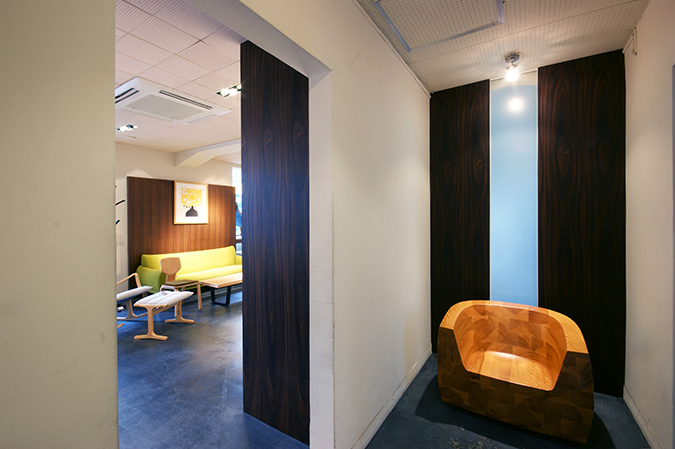 The eye-stop is at the end of the corridor. When turning to the left, a visitor can enter in the shop. Beyond the entrance on the left is a board wall that emphasizes the gate.
The eye-stop is at the end of the corridor. When turning to the left, a visitor can enter in the shop. Beyond the entrance on the left is a board wall that emphasizes the gate.
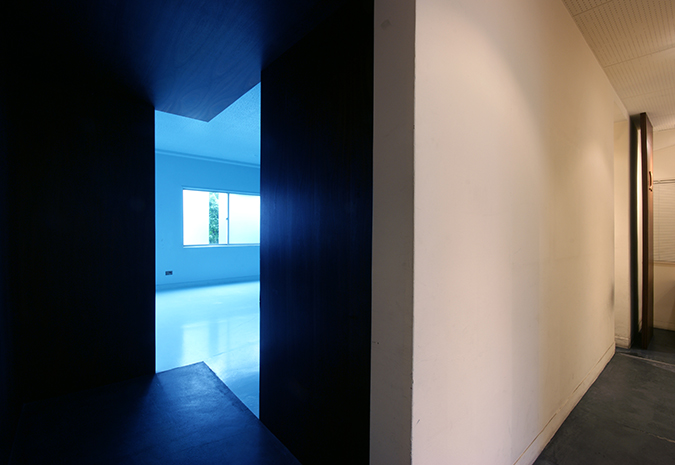 See the gallery and the tunnel to the gallery from the corridor.
See the gallery and the tunnel to the gallery from the corridor.
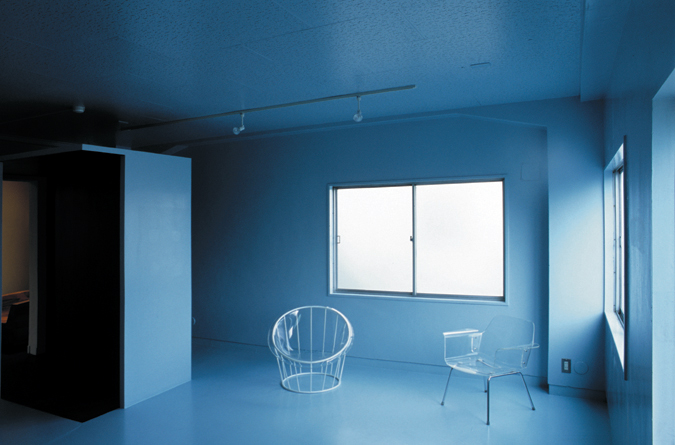 See the inside of the gallery. An exhibition of furniture or art is held.
See the inside of the gallery. An exhibition of furniture or art is held.
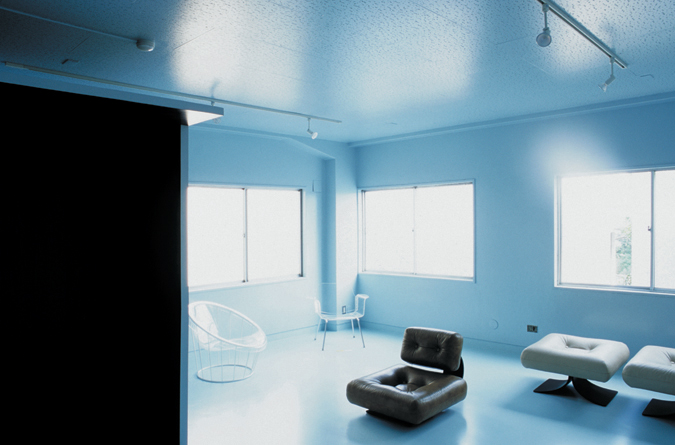 See the inside of the gallery. When passing through the tunnel as a brown element from the corridor, the gallery is finished with grayish light blue paint and creates an atmosphere of being in the water.
See the inside of the gallery. When passing through the tunnel as a brown element from the corridor, the gallery is finished with grayish light blue paint and creates an atmosphere of being in the water.
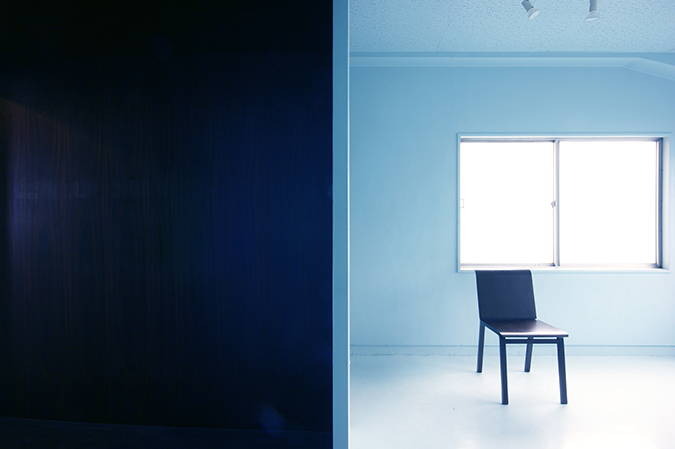 See the tunnel to the gallery and the inside of the gallery.
See the tunnel to the gallery and the inside of the gallery.
See the corridor and the shop beyond it through the tunnel from the gallery.
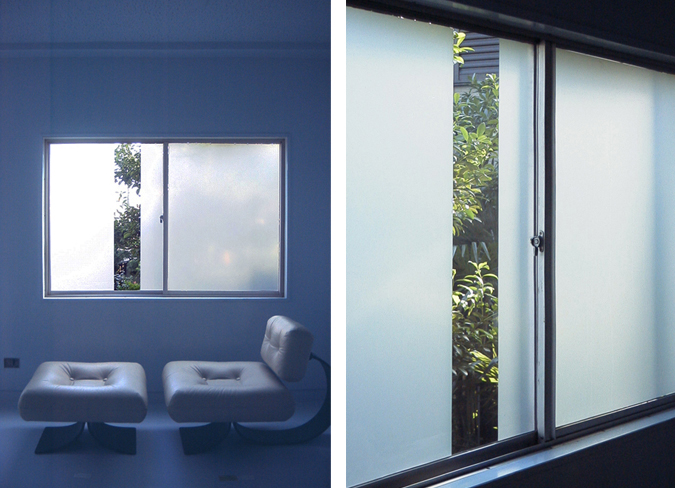 Details of the gallery. The glass of the windows sometimes has a slit to cut out the green landscape outside.
Details of the gallery. The glass of the windows sometimes has a slit to cut out the green landscape outside.
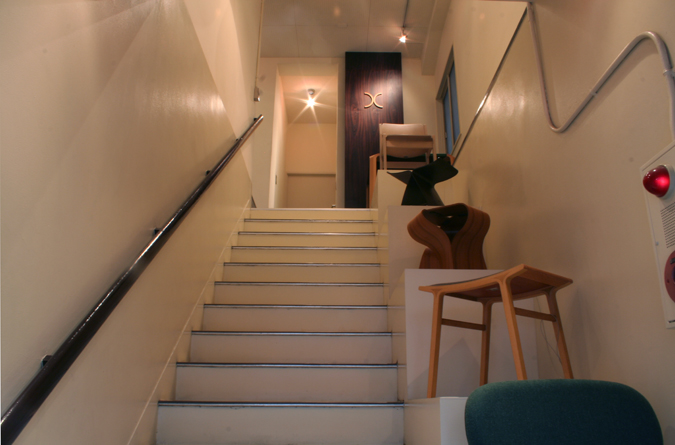 See the entrance from the street. A stepped exhibition stand was set up that amplified the original stairs. Only the entrance has a slightly different paint finish, implying that it is the entrance. The handrail as a brown element guides the customer to the store on the 2nd floor, implying that the brown board wall at the end of the landing will change direction.
See the entrance from the street. A stepped exhibition stand was set up that amplified the original stairs. Only the entrance has a slightly different paint finish, implying that it is the entrance. The handrail as a brown element guides the customer to the store on the 2nd floor, implying that the brown board wall at the end of the landing will change direction.
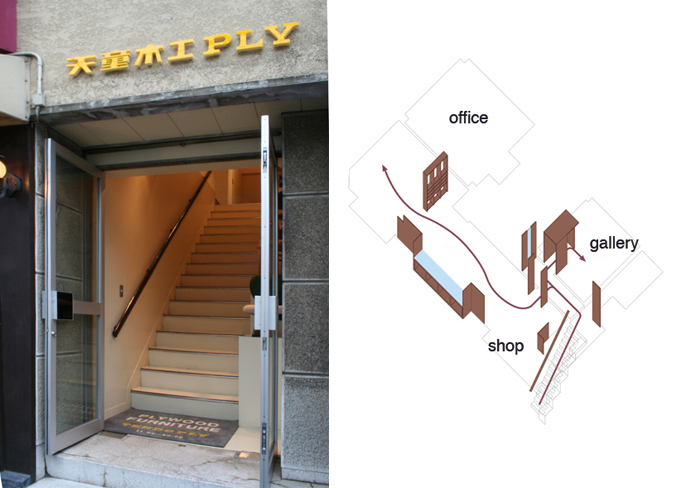 (Left) See the stairs of the entrance from the street. (Right) Show the arrangement of brown elements and flow lines.
(Left) See the stairs of the entrance from the street. (Right) Show the arrangement of brown elements and flow lines.
@
@
@